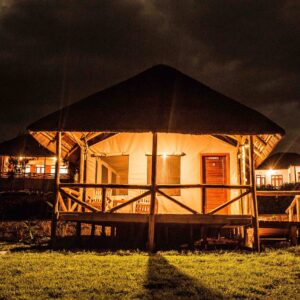With their sleek, athletic build, distinctive tear marks, and unparalleled speed, cheetahs (Acinonyx jubatus) are among Africa’s most captivating predators. Unlike their more robust feline cousins, the lions and leopards, cheetahs are built for explosive acceleration, making them the fastest land animals on Earth. Witnessing a cheetah on the hunt, or even just observing their elegant presence on the savanna, is a truly exhilarating and often humbling experience. However, these magnificent cats are also highly elusive and critically endangered in many areas, making sightings a special privilege. Their preference for open grasslands and their relatively shy nature mean that knowing where to look significantly increases your chances. If you dream of encountering the “ghost of the grasslands,” here are the top 10 best places in Africa to see cheetahs.
1. Serengeti National Park, Tanzania: The Classic Cheetah Domain
The vast, open plains of Serengeti National Park in Tanzania arguably the most iconic and reliable place to spot cheetahs in Africa. Their preferred habitat of expansive grasslands, dotted with scattered acacia trees and kopjes, provides the perfect hunting grounds for these speedsters. The abundant prey, particularly gazelles and wildebeest calves, ensures a healthy cheetah population. The sheer size of the park means that while sightings require patience, the rewards are often spectacular, offering opportunities to witness them hunting or interacting with their cubs.
2. Ndutu Area (Southern Serengeti), Tanzania: Calving Season Hotspot
During the calving season of the Great Wildebeest Migration (roughly January to March), the Ndutu area in the southern Serengeti and Ngorongoro Conservation Area becomes an exceptional hotspot for cheetah sightings. The thousands of vulnerable wildebeest and zebra calves provide an easy and plentiful food source, drawing cheetahs to this specific region. The short-grass plains here offer excellent visibility, making it easier to spot them stalking or resting. This period is prime for witnessing cheetah hunting action.
3. Ngorongoro Conservation Area, Tanzania: Crater’s Open Stage
The Ngorongoro Conservation Area, particularly within the Ngorongoro Crater itself, offers a unique and highly rewarding environment for cheetah sightings. The crater floor’s open grasslands, combined with its relatively contained ecosystem, mean that cheetahs are often easier to locate than in more expansive areas. While the overall population might not be as large as the Serengeti’s, the high density of prey and the excellent visibility make for consistent opportunities to observe them.
4. Lake Manyara National Park, Tanzania: A Surprise Gem
While not as famous for cheetahs as the Serengeti or Ngorongoro, Lake Manyara National Park can offer surprising sightings, particularly in its open grassland areas. It’s a smaller park, often visited as part of a northern circuit itinerary. While cheetahs are not its primary draw, their presence adds to the park’s diverse wildlife offerings. Patience and a keen-eyed guide are key here, but a sighting can be a delightful bonus.
5. Tarangire National Park, Tanzania: Dry Season Opportunities
Tarangire National Park, known for its massive elephant herds and iconic baobab trees. Also offers good opportunities for cheetah sightings, especially during the dry season (June to October). As the vegetation thins out and animals congregate around the Tarangire River, cheetahs become more visible. The park’s varied landscape, including open woodlands and grassy plains, provides a suitable habitat for these agile hunters.
6. Ruaha National Park, Tanzania: Southern Circuit Seclusion
For those venturing into Tanzania’s wilder Southern Circuit, Ruaha National Park is an outstanding destination for cheetahs. As Tanzania’s largest national park, Ruaha offers vast, untouched wilderness and a sense of solitude. The open plains and sparse woodlands provide excellent habitat. While sightings might require more tracking due to the park’s immense size. The rewards are often incredibly intimate and exclusive, away from the crowds of the northern parks.
7. Nyerere National Park (formerly Selous Game Reserve), Tanzania: Riverine & Open Plains
Nyerere National Park, Africa’s largest protected area, offers a diverse landscape of riverine forests, open plains, and woodlands. While famous for its large populations of elephants, buffalo, and wild dogs, Nyerere also boasts a healthy cheetah population. The combination of open areas for hunting and denser vegetation for cover makes it a good habitat. Boat safaris offer unique perspectives. But game drives are where you’ll primarily seek out cheetahs.
8. Masai Mara National Reserve, Kenya: The Kenyan Counterpart
Across the border from the Serengeti, Kenya’s Masai Mara National Reserve, equally renowned for its exceptional cheetah sightings. The Mara’s rolling grasslands and abundant prey, especially during the Great Migration (July to October), create a perfect environment for these big cats. The relatively high density of cheetahs and the open terrain make it one of the best places to witness their incredible hunting prowess. Many iconic cheetah documentaries have been filmed here.
9. Lemala Ewanjan, Tanzania: Strategic Camp Location
While not a park itself, Lemala Ewanjan, a luxury tented camp strategically located in the Seronera Valley of the central Serengeti. This area renowned for its year-round wildlife, including a particularly strong population of cheetahs. Staying at a camp like this minimizes travel time to prime cheetah habitats. Increasing your chances of early morning or late afternoon sightings when these cats are most active. Their expert guides are highly skilled at tracking.
10. Namiri Plains Camp, Tanzania: Cheetah Conservation Hub
Also located within the Serengeti, Namiri Plains Camp holds a special significance for cheetah enthusiasts. This area was closed to tourism for over 20 years to allow cheetah and other predator populations to recover. It has since become a prime cheetah research and conservation hub. The plains around Namiri are now known for exceptional cheetah sightings. Often with very few other vehicles around, offering incredibly exclusive and rewarding encounters.
Complete Guide for Travelers to Visit Serengeti National Park
Why Tanzania is the perfect travel destination during and after COVID-19
Cheetah vs Leopard: What’s the Difference?
Tanzania Tours: Tanzania Safari Packages
10 Fascinating Facts About African Big Cats
Tips for Cheetah Sightings: Maximizing Your Chances
Spotting these elusive predators requires a combination of good timing, expert guidance, and a bit of luck. Here are some key tips to maximize your chances:
Dry Season (June-October). This period generally offers the best visibility as the grass shorter and animals congregate around limited water sources, making cheetahs easier to spot.
Great Migration (Specific Phases). Most seen animals and where to spot them on your Tanzania Safari! Timing your visit to coincide with the calving season in the southern Serengeti (January-March) or the river crossings in the northern Serengeti/Masai Mara (July-October) significantly increases prey availability, drawing cheetahs to these areas for hunting opportunities.
Expert Guides. A knowledgeable and experienced safari guide your most valuable asset. They understand cheetah behavior, know their preferred habitats, and are skilled at tracking. Communicate your desire to see cheetahs to your guide.
Stay at Camps in Prime Areas. Choosing accommodations (like Lemala Ewanjan or Namiri Plains Camp) that are strategically located within known cheetah territories or areas with high prey concentrations will reduce travel time and increase your chances of early morning or late afternoon sightings.
Patience and Persistence. Cheetahs elusive. Be patient, spend time in promising areas, and be prepared for early starts and long game drives. Sometimes, the best sightings happen when you least expect them.
Early Morning & Late Afternoon. Cheetahs a most active during the cooler parts of the day, particularly early mornings and late afternoons, when they hunt.
Top Fun Facts About Cheetahs. Cheetahs are famous for being the world’s fastest land animal, capable of reaching speeds up to 75 mph. They are also unique among big cats as they cannot roar, instead communicating with chirps, purrs, and meows. Their distinctive black tear marks under their eyes act like built-in sunglasses, helping them see clearly while hunting in the sun.
Final Thought
The opportunity to witness a cheetah in its natural habitat is a truly unforgettable highlight of any African safari. From the vast, iconic plains of the Serengeti and Masai Mara to the secluded wilderness of Ruaha and the specialized conservation efforts around camps like Namiri Plains, Africa offers unparalleled chances to encounter these magnificent, yet vulnerable, speedsters. By choosing the right destination and following these expert tips, you can significantly increase your odds of experiencing the thrill of seeing the ghost of the grasslands in action, a memory that will last a lifetime.






